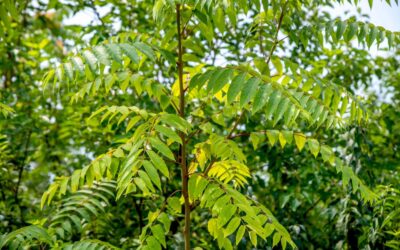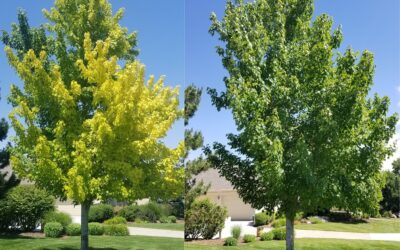Crabapple trees provoke all sorts of emotions—people love their riotous blossom of thousands of white or pink flowers in early spring and sometimes hate the equally large number of small red fruit that fall onto lawns and sidewalks in late summer. It’s a packaged deal, though – you can’t have one without the other. And you can turn the nuisance of the fruit drop into a positive by gathering them up and using them to make jellies and ciders for winter.
Varieties, Appearance, Hybridization
There are over 700 known varieties of crabapple tree, around 200 of which are commonly grown in North America, and more new types are propagated every year. While none are native to Colorado, they are hardy specimens that are found throughout the state, even in high-altitude landscapes. They bloom for three or four weeks in early spring, usually starting from mid-April to mid-May, depending on temperatures.
The crabapple is a small, medium-fast growing tree that reaches heights of 15-25 feet, depending on species. Blossoms range from white to pink and red, again depending on variety. Its branches are irregular with narrow deep green leaves and often spread wider than the tree’s height. Crabapple trees are self-sterile, so propagation is dependent on pollen being spread from plant to plant by bees and other flying insects. They are easily hybridized, and some cold climate varieties are used as root stock for domestic apple trees to add hardiness and other beneficial traits.
Crabapple Fruit
Most crabapple fruit is high in malic acid, making it extremely sour, so it isn’t an important food crop, but some Southeast Asian cultures use it as a condiment with salt, chile peppers or shrimp paste. There are some varieties though, the “Chestnut” cultivar for instance, that have fruit that is very sweet. All crabapple fruit is very high in pectin, making it popular in making jellies and preservers, and its spicy juice is sometimes added to ciders to give them a more interesting flavor. Apple wood of any kind is dense and slow-burning, making it an excellent cooking fuel that is often used for smoking foods.
Susceptible to Fire Blight and Cedar Apple Rust
Crabapple trees are susceptible to fire blight and cedar apple rust, which can cause leaves to get yellow or orange spots and cause heavy early leaf drop. Colorado State University has been engaged in an extensive study of fire blight and has identified seven crabapple varieties with desirable ornamental characteristics that are also blight-resistant. You can see the results here.
To learn more about the Crabapple in the Front Range and other options for your landscape, give us a call at 303-623-8733.



